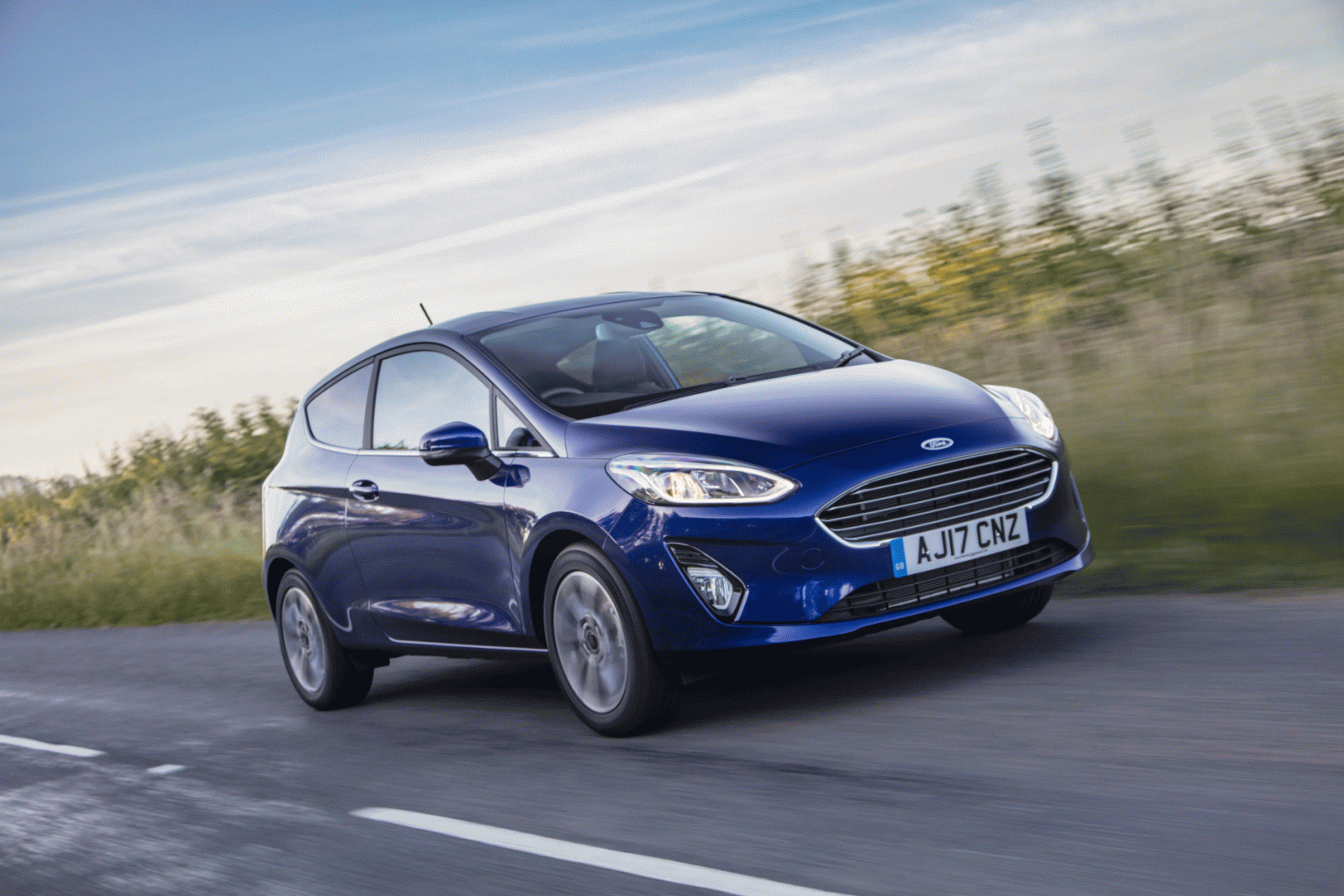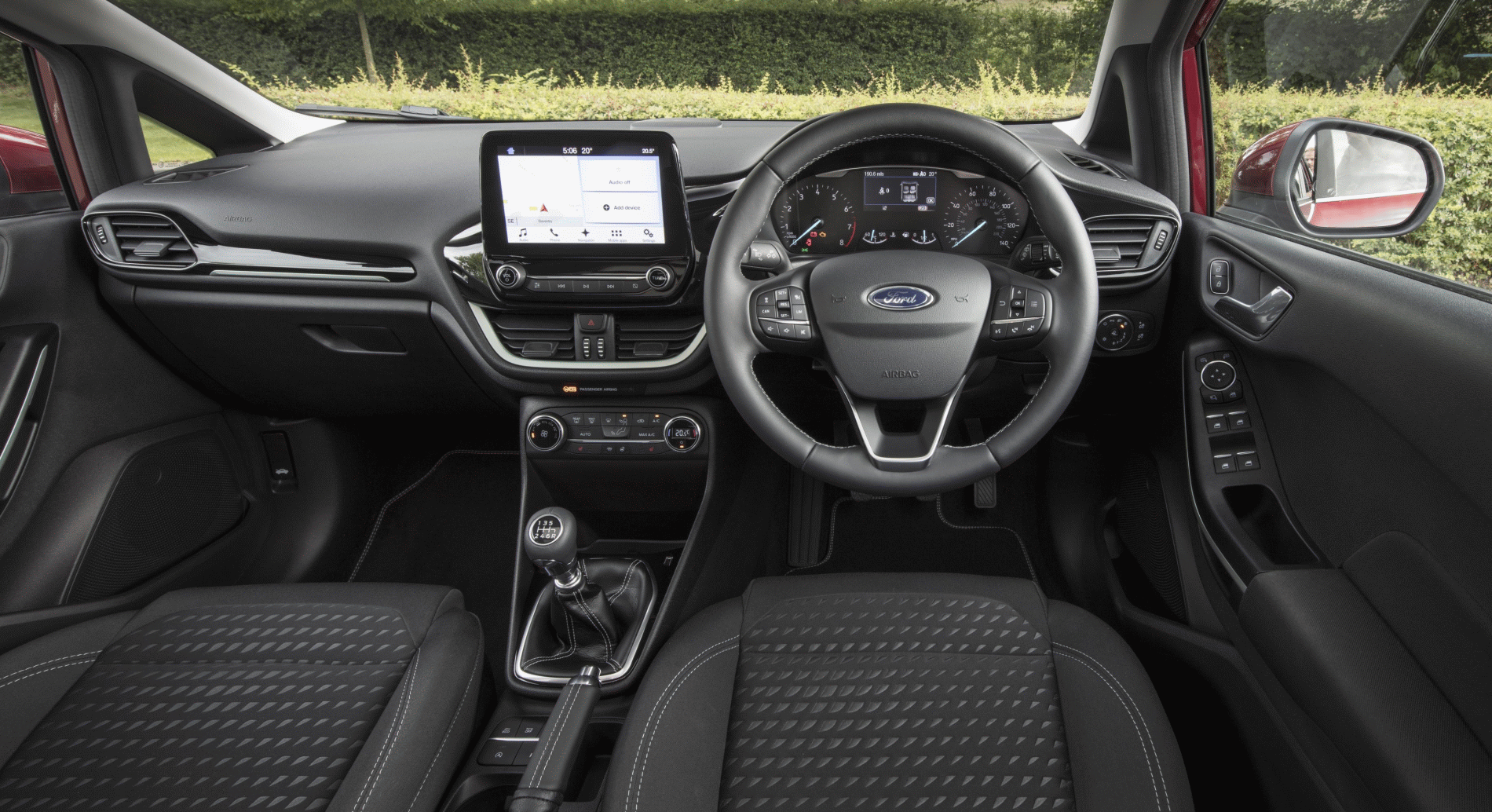Despite the Fiesta coming in strong, the competition in the small car industry is mightier than ever, with incoming models like the Skoda Fabia offering space and value and the Seat Ibiza being a great all-rounder. So, how does Ford Fiesta stand to compete with its competitors? Well, let’s get down to the details!

What’s it like to drive a Fiesta?
Obviously, the difference in drive comes down to the engine you choose from the options available in this model; these being the 1.1-litre petrol engine, the 1.0 Ecoboost engine which comes in 99bhp, 123bhp and the 138bhp, then finally you have the two 1.5 litre TDCi engines available.
The entry-level 1.1-litre petrol engine has only 69bhp, whereas the 1.0 Ecoboost engine that has been passed over from the previous Fiesta, the 99bhp certainly is a great engine that is great to run around town and comfortable on longer motorway trips. The upgrade after this is the mega 123 bhp, which is our personal favourite as it offers an increase in pace in comparison to the 99bhp. Despite our love for the 123bhp, we don’t see the extra cost worth the investment over the 99bhp, whilst the 138bhp version of this engine pulls eagerly from low revs, yet loves to be revved beyond 6000rpm.
Also available are two versions of the 1.5 litre TDCi engines, although as the owner of the vehicle we say to justify this investment, you would have to commit to some serious mileage to show the potential of the diesel in such a small car.
In terms of driver comfort, as far as we’re concerned, the most attractive feature about the Fiesta is that it has the combination of ‘small-car fun’, but has the ‘big car sophistication’. It deals brilliantly with those horrid sharp-edged bumps and potholes, which we all know are the bane of our lives as they’re all too common on British roads. It rises higher than its rivals, although the Seat Ibiza smoothens over the smaller imperfections slightly more, the Fiesta is more comfortable than every other rival in the small car class. ST-Line models have firmer sports suspension, so you feel more of the bumps as you pass them beneath the car; however, the ride is still to a high standard of control.
Obviously, the difference in drive comes down to the engine you choose from the options available in this model; these being the 1.1-litre petrol engine, the 1.0 Ecoboost engine which comes in 99bhp, 123bhp and the 138bhp, then finally you have the two 1.5 litre TDCi engines available.
The entry-level 1.1-litre petrol engine has only 69bhp, whereas the 1.0 Ecoboost engine that has been passed over from the previous Fiesta, the 99bhp certainly is a great engine that is great to run around town and comfortable on longer motorway trips. The upgrade after this is the mega 123 bhp, which is our personal favourite as it offers an increase in pace in comparison to the 99bhp. Despite our love for the 123bhp, we don’t see the extra cost worth the investment over the 99bhp, whilst the 138bhp version of this engine pulls eagerly from low revs, yet loves to be revved beyond 6000rpm.
Also available are two versions of the 1.5 litre TDCi engines, although as the owner of the vehicle we say to justify this investment, you would have to commit to some serious mileage to show the potential of the diesel in such a small car.
In terms of driver comfort, as far as we’re concerned, the most attractive feature about the Fiesta is that it has the combination of ‘small-car fun’, but has the ‘big car sophistication’. It deals brilliantly with those horrid sharp-edged bumps and potholes, which we all know are the bane of our lives as they’re all too common on British roads. It rises higher than its rivals, although the Seat Ibiza smoothens over the smaller imperfections slightly more, the Fiesta is more comfortable than every other rival in the small car class. ST-Line models have firmer sports suspension, so you feel more of the bumps as you pass them beneath the car; however, the ride is still to a high standard of control.
 Interior Layout
Interior LayoutDepending upon what position you like to drive in, you do sit higher up in comparison to other rivals, which isn’t necessarily a bad thing, again this comes down to personal taste. On a positive note, the seat holds you securely in place through corners while remaining comfortable on long distances. Included in the interior, is a heated windscreen, therefore this makes de-icing your screen in the winter months a whole lot easier (this is included as a standard on all trims apart from entry-level Style).
Another feature included, is the rear parking sensors which are classed as a standard on Titanium trim and above, whilst a reversing camera has been fitted to Titanium X, ST-Line X and Vignale trims.
In terms of technology the Fiesta, as no surprise, hits the consumer with an overload of technology to enjoy. This includes the 8.0in touchscreen that comes on Titanium models and above is bright and is quite simple to use – which is great for those who may not consider themselves tech-savvy! The only con we think there is to consider with this feature, is that there are no shortcut buttons to make it easier to jump between functions. In comparison, the high-demand Zetec and ST-Line trims have been accustomed to a smaller 6.5in touchscreen that doesn’t have a built-in sat-nav, although the upgrade for a bigger screen is available. All trims apart from the entry level Style include Apple CarPlay and Android Auto, this enables the consumer to tether with their phone and control selected apps through the car’s touchscreen.
Space
Space is good in the front of the Ford Fiesta, with its sloping windscreen and the way the seat has been positioned. The Fiesta has more than enough head room for those sitting in the front and with ample leg room too. In addition, there is enough elbow space for two broad adults to sit comfortably.
We think that the rear space in this model isn’t its strongest attribute, as this wouldn’t be suited for people who are tall as they would either need to sit upright or put up with the annoyance of their knees being wedged against the seat in front. This puts its rival Seat Ibiza at the top.
The boot space is practical to a certain degree, you’ll definitely have no struggle putting in the weekly shop, however if you were planning on taking your Fiesta to the airport, then that may find yourself struggling to fit in the suitcases. If you find that you keep larger belongings in your boot, then the Fiesta’s competitors like the Seat Ibiza or Skoda Fabia will be the better option for you.
Overall we believe the Fiesta is a great small car and comes with practicality and speed for a little hatchback. However, this wouldn’t be the ideal option to have if you are looking for a family car, due to the lack of space given in this confined model.
For more CarCliq reviews click here
Space
Space is good in the front of the Ford Fiesta, with its sloping windscreen and the way the seat has been positioned. The Fiesta has more than enough head room for those sitting in the front and with ample leg room too. In addition, there is enough elbow space for two broad adults to sit comfortably.
We think that the rear space in this model isn’t its strongest attribute, as this wouldn’t be suited for people who are tall as they would either need to sit upright or put up with the annoyance of their knees being wedged against the seat in front. This puts its rival Seat Ibiza at the top.
The boot space is practical to a certain degree, you’ll definitely have no struggle putting in the weekly shop, however if you were planning on taking your Fiesta to the airport, then that may find yourself struggling to fit in the suitcases. If you find that you keep larger belongings in your boot, then the Fiesta’s competitors like the Seat Ibiza or Skoda Fabia will be the better option for you.
Overall we believe the Fiesta is a great small car and comes with practicality and speed for a little hatchback. However, this wouldn’t be the ideal option to have if you are looking for a family car, due to the lack of space given in this confined model.
For more CarCliq reviews click here
Looking for a used Ford Fiesta? Click here